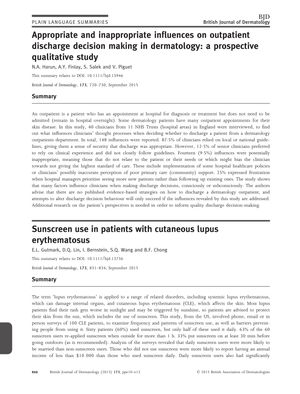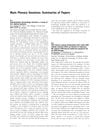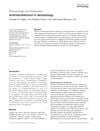Plain Language Summaries of Dermatology Studies
September 2015
in “
British Journal of Dermatology
”

TLDR Most clinicians follow discharge guidelines, many lupus patients don't use sunscreen regularly, dithranol is effective for psoriasis, biopsy methods should be based on lesion type, voriconazole may raise skin cancer risk, a new scale can help diagnose female hair loss early, and most melanomas may develop from existing moles.
In a study involving 40 clinicians from 11 NHS Trusts in England, it was found that while the majority (87.5%) adhered to guidelines when discharging dermatology outpatients, some decisions were influenced by inappropriate factors. Another study in the US with 100 cutaneous lupus erythematosus patients revealed that only 60% used sunscreen, and just 30% used it daily, highlighting the need for improved patient education. An Austrian study of 110 psoriasis patients confirmed the effectiveness of dithranol therapy, with 82.7% achieving significant improvement. In the US, a comparison of biopsy techniques in 607 cases suggested that lesion characteristics should determine the biopsy method. Research on voriconazole N-oxide and its photoproducts indicated they could increase keratinocyte sensitivity to UVA, potentially raising skin cancer risk in patients. A new visual scale for assessing hair shedding was validated in a study with 209 women, aiding in the early diagnosis of female pattern hair loss. Lastly, a study of 60 nevus-associated melanomas showed that most melanomas likely developed from pre-existing moles, based on mutational similarities.




